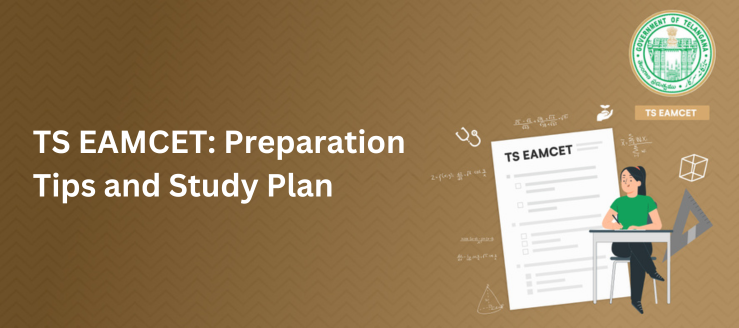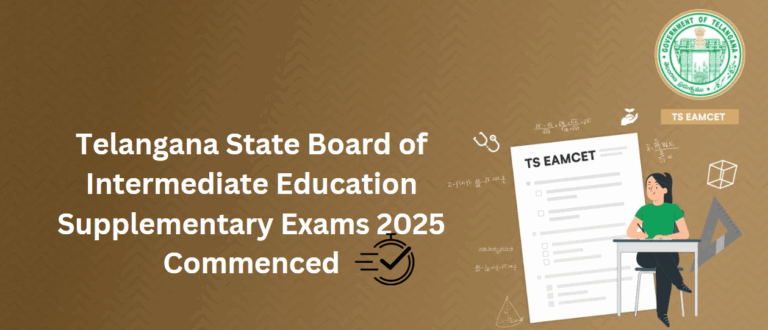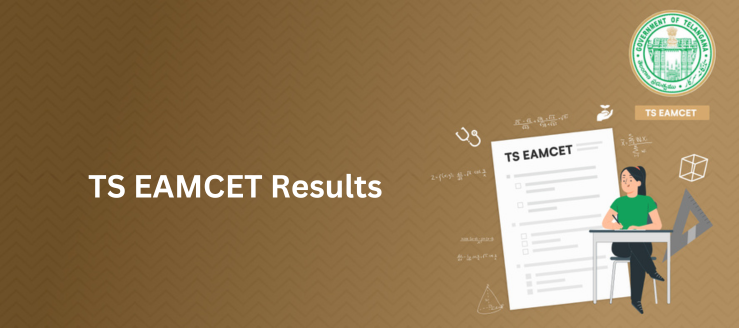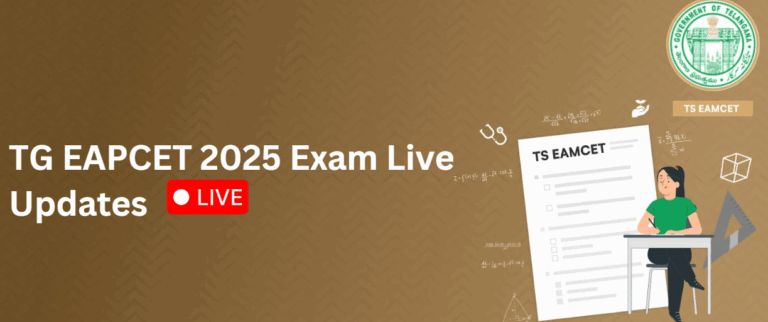
TS EAMCET Preparation 2025: TS EAMCET is a state-level entrance exam conducted by JNTUH on behalf of the Telangana State Council of Higher Education (TSCHE). With over 2 lakh candidates appearing for the exam annually, preparing well is crucial. If you’re seeking the best preparation tips and study plans for an engineering course, you can find the detailed plan in this article.
Also Check: TS EAMCET Mock Test
Top 10 Preparation Tips to Crack TS EAMCET 2025
Start your preparation after reading these tips. Some of the important tips are mentioned here:
- Gather the detailed syllabus that includes Mathematics/Biology, Physics, and Chemistry. Obtain this from reliable sources such as the official website of the exam conducting authority or reputable study guides.
- Create a structured timetable that allocates sufficient time for each subject. Prioritize subjects based on your strengths and weaknesses, and allocate more time to areas where you need improvement. Break down your study sessions into manageable chunks with specific timelines for each topic.
- Seek recommendations from experts, teachers, or seniors regarding the most effective study materials and reference books for TS EAMCET preparation. Ensure that the materials align with the syllabus and provide comprehensive coverage of key concepts.
- Make use of textbooks, practice papers, mock tests, previous question papers, and online resources such as articles, PDFs, and educational videos. These resources will help you gain a deeper understanding of the concepts and familiarize yourself with different types of questions.
- Solve a wide range of questions to strengthen your problem-solving skills and strengthen your understanding of key concepts. Aim to practice consistently and gradually increase the difficulty level as you progress in your preparation.
- Allocate dedicated time for revision to cover your learning and strengthen important concepts. Reviewing notes, formulas, and key points regularly will help you retain information more effectively and identify any areas that require further clarification.
- Take notes on important points, formulas, and concepts during your study sessions. Organize your notes systematically by topic to make for easy revision. This will also serve as a quick reference guide during your preparation.
- Take Mock Tests and practice papers regularly into your study routine to assess your progress, identify weak areas, and improve your performance. Analyze your performance in mock tests for improvement and adjust your study strategy accordingly.
- Prioritize your physical and mental well-being by eating nutritious food, exercising regularly, and practicing relaxation techniques such as meditation. A healthy lifestyle will help you stay focused, energized, and motivated throughout your preparation.
- Watch motivational videos, engage with supportive communities, and maintain a positive mindset. Believe in your abilities, stay committed to your goals, and don’t hesitate to seek help or clarification whenever needed.
Also Read: TS EAMCET Important Topics and Chapter-wise Weightage
30 Days Study Plan for TS EAPCET 2025
| Day | Mathematics | Physics | Chemistry |
|---|---|---|---|
| 1 | Algebra: 1. Functions 2. Mathematical Induction | Laws of Motion | P-block Elements: 1. Group – 14 Elements 2. Group – 15 Elements 3. Group – 16 Elements |
| 2 | Algebra: 1. Matrices 2. Sequence and Series | Work, Power, and Energy | P-block Elements: 1. Group – 17 Elements 2. Group – 18 Elements |
| 3 | Vector Algebra: 1. Product of Vectors 2. Addition of Vectors | System of Particles and Rotatory Motion | 1. Basic Concepts in Chemistry 2. Atomic Structure |
| 4 | Calculus: Differentiation | System of Particles and Rotatory Motion | 1. Chemical Bonding 2. Molecular Structure |
| 5 | Calculus: Limits & Continuity | Mechanical Properties of Fluids | Organic Chemistry: Some Basic Principles and Techniques |
| 6 | Sets and Functions: 1. Sets 2. Relations and Functions 3. Trigonometric Functions | Current Electricity | 1. Redox Reactions 2. Classification of Elements & Periodicity in properties |
| 7 | Calculus: Differential Calculus | Moving Charges & Magnetism | Organic Compounds containing C, H, O: 1. Aldehydes and Ketones 2. Carboxylic Acids |
| 8 | Relations and Functions: Types of relations and Functions Binary operations | Ray Optics and Optical Instruments | Organic Compounds containing Nitrogen: 1. Amines 2. Diazonium salts 3. Cyanides and Isocyanides |
| 9 | Revise all topics covered and attempt mock tests | Revise all topics covered and attempt mock tests | Revise all topics covered and attempt mock tests |
| 10 | Applications of Derivatives: 1. Rate of Change 2. Errors & Approximations | Semiconductor Electronics – Materials, Devices, Simple circuits | Organic Compounds Containing Nitrogen: 1. Amines 2. Diazonium salts, Cyanides and Isocyanides |
| 11 | Applications of Derivatives: Tangents & Normals | Semiconductor Electronics – Materials, Devices, Simple Circuits | 1. Chemical Equilibrium 2. Chemical Equilibrium Acids, Bases and Salts |
| 12 | Applications of Derivatives: Mean Value Theorems | Gravitation | Solutions – Colligative Properties |
| 13 | Applications of Derivatives: Maxima Minima | Motion in a Straight Line | 1. Coordination Compounds 2. Chemical Thermodynamics |
| 14 | Algebra: Complex Numbers | Motion in a Plane | States of Matter Gases |
| 15 | Algebra: Quadratic Expressions | Thermodynamics | States of Matter Liquids |
| 16 | Algebra: Permutations & Combinations | Thermal Properties of Matter | 1. Chemical Equilibrium 2. Chemistry in Everyday Life |
| 17 | Algebra: 1. Binomial Theorem 2. Measures of Dispersion | Electric Charges and Fields | 1. Biomolecules 2. Polymers |
| 18 | Algebra: De Moivre’s Theorem | Electric Charges and Fields | Purification and Characterization of Organic Compounds |
| 19 | Algebra: 1. Theory of Equations 2. Partial Fractions 3. Determinants | 1. Electrostatic potential and capacitance 2. Oscillations 3. Units and Measurements | 1. Organic Chemistry Hydrocarbons 2. Electrochemistry – Chemical Kinetics 3. Haloalkanes |
| 20 | Coordinate Geometry: 1. Circle 2. System of Circles 3. Parabola 4. Hyperbola 5. Ellipse 6. Plane | 1. Electrostatic potential and capacitance 2. Dual Nature of Radiation and Matter | 1. Environmental Chemistry 2. Surface Chemistry |
| 21 | Calculus: 1. Differential Integrals 2. Differential Equations | 1. Alternating Currents 2. Electromagnetic Waves | f-block Elements s-block Elements: 1. Alkali Metals 2. Alkaline Earth Metals |
| 22 | Calculus: Areas | Electromagnetic Induction | Hydrogen and its Compounds |
| 23 | Probability: Probability, Random variables, Probability distribution | Waves | Chemical Kinetics |
| 24 | Revise all topics covered and attempt mock tests | Revise all topics covered and attempt mock tests | Revise all topics covered and attempt mock tests |
| 25 | Coordinate Geometry: 1. Locus Transformation of Axes 2. The straight line, Pair of Straight lines | 1. Wave Optics 2. Magnetism and Matter | 1. General principles and processes of isolation of metals 2. Stoichiometry 3. Solid state |
| 26 | Coordinate Geometry: 1. Three-dimensional coordinates 2. Direction Cosines, Direction Ratios | 1. Mechanical Properties of Solids 2. Gravitation | P-block Elements: 1. Group-13 (Boron Family) 2. Group-14 (Carbon Family) 3. Electrochemistry |
| 27 | Trigonometry: 1. Trigonometric ratios up to transformations 2. Inverse Trigonometric | 1. Kinetic Theory of Gases 2. Thermal Properties of Matter | 1. General Principles of Metallurgy 2. Haloarenes |
| 28 | Trigonometry: Properties of Triangles | Physical World | Electrochemistry |
| 29 | Revise Important Topics Covered and Review PYQ’s | Revise Important Topics Covered and Review PYQ’s | Revise Important Topics Covered and Review PYQ’s |
| 30 | Revise Important Topics Covered and Review PYQ’s | Revise Important Topics Covered and Review PYQ’s | Revise Important Topics Covered and Review PYQ’s |
Also Checkout: TS EAMCET Rank Predictor






